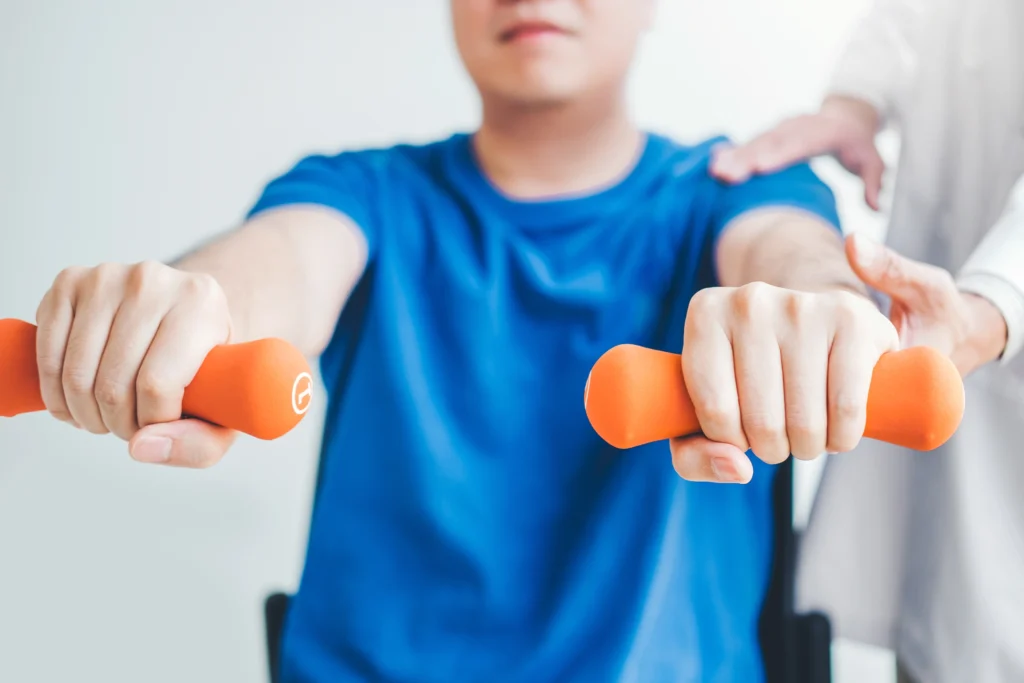Cerebral palsy is a disorder that affects different aspects of mobility such as coordination, control, and balance.
Individuals with this condition often experience muscle stiffness, which makes activities like walking, standing, and maintaining balance quite hard for them.
The muscle spasticity and weakness also limit the range of motion, making it even harder for the individual.
To deal with such problems, a good solution has to be devised. Luckily, physical therapy can help alleviate some of these symptoms by strengthening muscles, improving range of motion, and enhancing balance and coordination.
This article gives insights regarding PT and its effectiveness in dealing with this condition.

Can physical therapy help with cerebral palsy?
Used for Evaluating Extent of CP
Therapists can be able to analyze and evaluate the extent of CP by doing an examination of the patient. They look at different things such as range of motion, motor function, balance, and muscle tone to assess functional ability. They do this through standardized tests, clinical assessments, and observational techniques. Through these methods, they can find certain symptoms like muscle spasticity, coordination difficulties, and other impairments that could signify one is suffering from this condition and how extensive it could be. After the initial analysis, they go ahead to create a custom treatment plan that will help the patient regain mobility and functional ability, benefits that in turn boost the overall quality of life.
Muscle Strengthening
After evaluating the condition, your physiotherapist goes ahead to implement some of the best and targeted exercises and interventions that are not only going to improve muscle strength but also enhance tone and functional abilities. A major challenge of the condition is weakness. This problem can be counteracted through the implementation of the right workouts. This process is conducted by the muscles through resistance training, which later on increases muscle mass, builds tolerance, and enhances motor function. It also reduces the chances of contractures, improves posture, and boosts one’s ability to perform tasks independently.
Better Range of Motion
As earlier mentioned, the condition really affects a range of motion by causing muscle tightness and spasticity. These issues in turn translate to reduced joint mobility and flexibility. Luckily, it addresses these problems by incorporating stretching techniques, manual exercises, and range of motion workouts. Such activities help relieve tight muscles and improve mobility of affected joints. These benefits enable the patient to move freely and with ease, enabling them to engage in daily activities in a much better way.
Enhanced Balance and Coordination
Balance and coordination are quite important mobility factors. Unfortunately, CP affects these parts of the human body quite a lot. Luckily, PT comes in handy because coordination drills, balance training, and targeted workouts, help enhance the overall balance and coordination of the affected individual. Your physio works with you to boost postural control and proprioception to address different things such as muscle spasticity and weakness. The results are better control and stability when doing activities such as walking, standing, and other functional tasks. With these benefits, the patient is able to enjoy extra mobility and independence in doing their daily activities.
Gait Training
Gait training is a method of training geared towards helping the patient walk and improve their mobility. This is done through the use of exercises and interventions meant to improve walking patterns, address gait issues, and improve overall functional mobility. Your therapist addresses elements such as step symmetry, foot placement, and stride length to help the patient develop a better and healthier walking pattern. Interventions such as treadmill training, orthotic devices, assistive aids, and braces may be implemented to further assist.
Functional Training
The end goal of PT is to help the patient achieve full independence in their ability to perform functional tasks. This is done through a combination of activities, exercises, and programs to address different movement patterns and motor skills needed for day-to-day operations such as eating, grooming, dressing, and mobility. The main objective is to boost balance, coordination, strength, and motor control. When this happens, the individual can be able to navigate life with great ease and confidence.
Physical therapy entails the use of exercises to help make muscles stronger, improve range of motion, and bring about better balance and coordination for individuals with CP. Therefore, it can be stated that it is quite beneficial for those dealing with CP because it helps boost their independence, as they are now able to do many tasks by themselves. To get the most out of it, be sure to work with the best physio that has your interests at heart.
